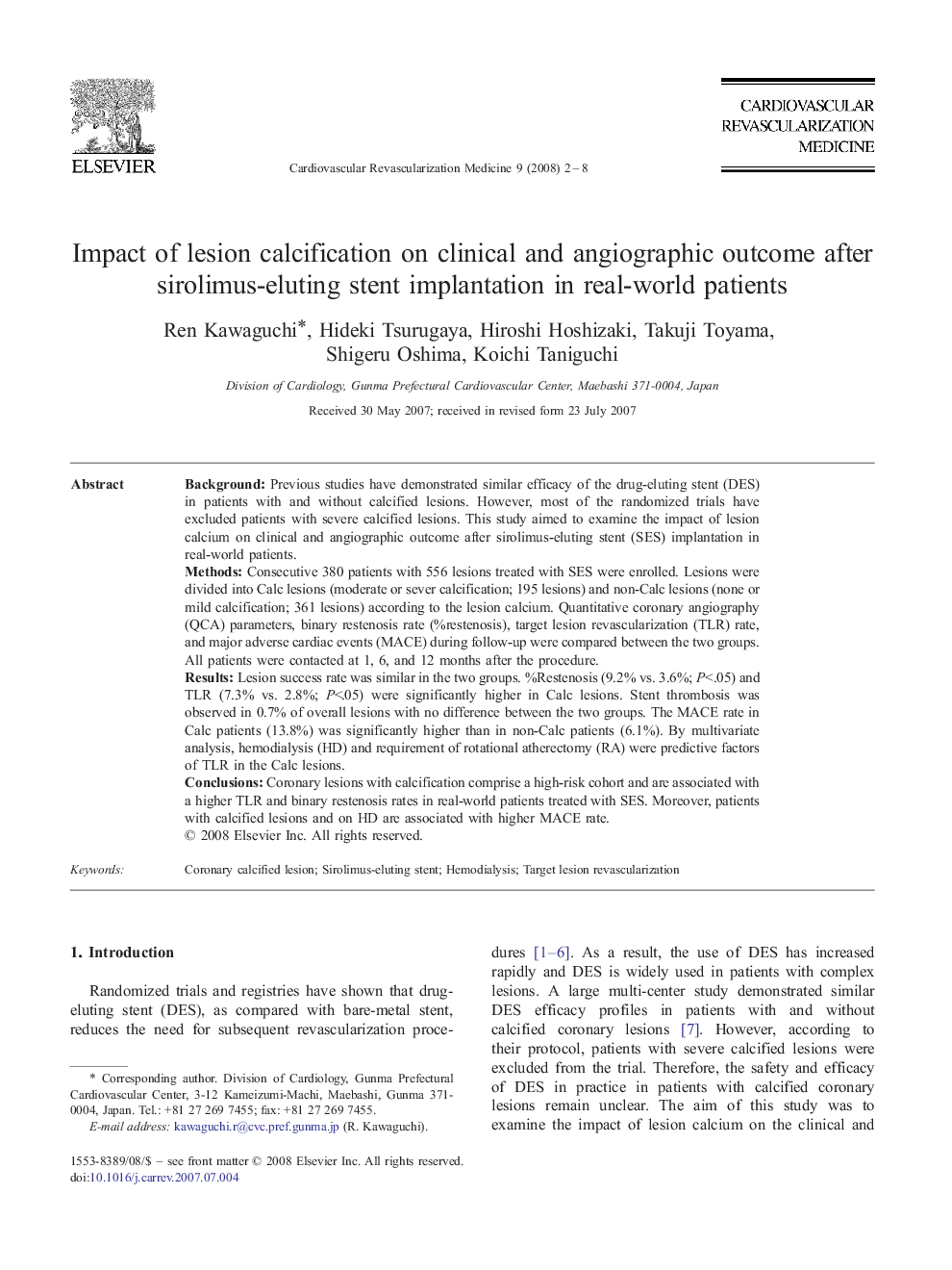| کد مقاله | کد نشریه | سال انتشار | مقاله انگلیسی | نسخه تمام متن |
|---|---|---|---|---|
| 2838020 | 1164910 | 2008 | 7 صفحه PDF | دانلود رایگان |

BackgroundPrevious studies have demonstrated similar efficacy of the drug-eluting stent (DES) in patients with and without calcified lesions. However, most of the randomized trials have excluded patients with severe calcified lesions. This study aimed to examine the impact of lesion calcium on clinical and angiographic outcome after sirolimus-eluting stent (SES) implantation in real-world patients.MethodsConsecutive 380 patients with 556 lesions treated with SES were enrolled. Lesions were divided into Calc lesions (moderate or sever calcification; 195 lesions) and non-Calc lesions (none or mild calcification; 361 lesions) according to the lesion calcium. Quantitative coronary angiography (QCA) parameters, binary restenosis rate (%restenosis), target lesion revascularization (TLR) rate, and major adverse cardiac events (MACE) during follow-up were compared between the two groups. All patients were contacted at 1, 6, and 12 months after the procedure.ResultsLesion success rate was similar in the two groups. %Restenosis (9.2% vs. 3.6%; P<.05) and TLR (7.3% vs. 2.8%; P<.05) were significantly higher in Calc lesions. Stent thrombosis was observed in 0.7% of overall lesions with no difference between the two groups. The MACE rate in Calc patients (13.8%) was significantly higher than in non-Calc patients (6.1%). By multivariate analysis, hemodialysis (HD) and requirement of rotational atherectomy (RA) were predictive factors of TLR in the Calc lesions.ConclusionsCoronary lesions with calcification comprise a high-risk cohort and are associated with a higher TLR and binary restenosis rates in real-world patients treated with SES. Moreover, patients with calcified lesions and on HD are associated with higher MACE rate.
Journal: Cardiovascular Revascularization Medicine - Volume 9, Issue 1, January–March 2008, Pages 2–8